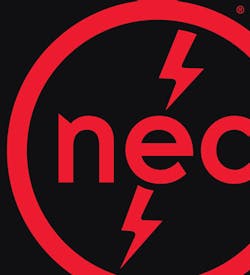Tip of the Week: Don’t Let the Size of the NEC Scare You Off
If you pick up a copy of the NEC and feel its heft, you can understand why many electricians and engineers struggle to find the requirements that apply to their application. But there’s a simple solution to this problem. It’s in how the NEC is arranged.
The NEC consists of nine chapters plus a section of appendices (called “Annexes). You don’t have to read through all nine chapters. The first four chapters apply generally to all installations. As you become more familiar with these chapters and the requirements in them, you’ll know things like “Requirements for services are in Art. 230” and just go to the appropriate chapter. There’s logic to how these chapters are structured, making it easy to scan through the chapter to find what you’re looking for.
The next three chapters supplement or modify the first four, if your application is for special occupancies (Chapter 5), special equipment (Chapter 6), or special conditions (Chapter 7). All of the chapters have meaningful names, so you can peruse the Table of Contents to see if your application might be covered. For example, suppose your application is an elevator. Elevators are a specialized type of equipment, so you look in Chapter 6 and find they’re covered by Art. 620.
About the Author

Mark Lamendola
Mark is an expert in maintenance management, having racked up an impressive track record during his time working in the field. He also has extensive knowledge of, and practical expertise with, the National Electrical Code (NEC). Through his consulting business, he provides articles and training materials on electrical topics, specializing in making difficult subjects easy to understand and focusing on the practical aspects of electrical work.
Prior to starting his own business, Mark served as the Technical Editor on EC&M for six years, worked three years in nuclear maintenance, six years as a contract project engineer/project manager, three years as a systems engineer, and three years in plant maintenance management.
Mark earned an AAS degree from Rock Valley College, a BSEET from Columbia Pacific University, and an MBA from Lake Erie College. He’s also completed several related certifications over the years and even was formerly licensed as a Master Electrician. He is a Senior Member of the IEEE and past Chairman of the Kansas City Chapters of both the IEEE and the IEEE Computer Society. Mark also served as the program director for, a board member of, and webmaster of, the Midwest Chapter of the 7x24 Exchange. He has also held memberships with the following organizations: NETA, NFPA, International Association of Webmasters, and Institute of Certified Professional Managers.
